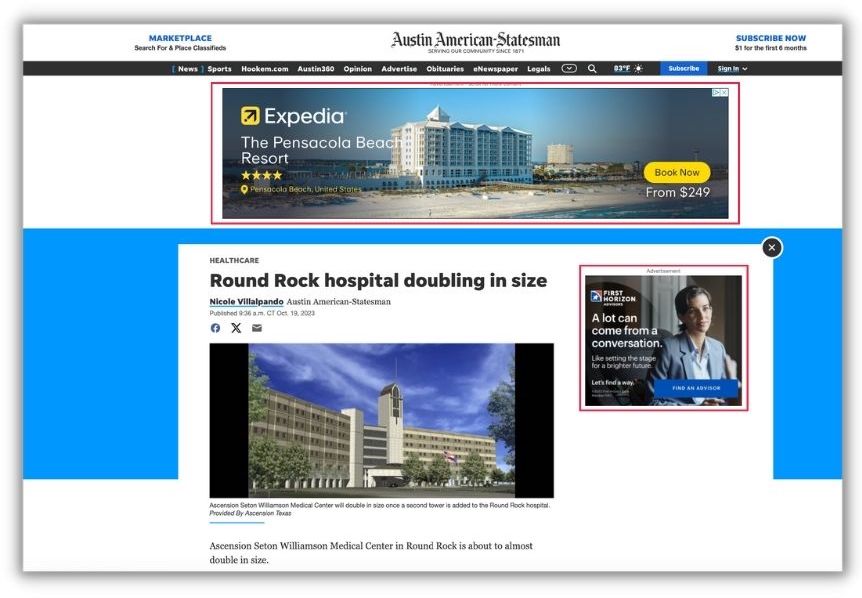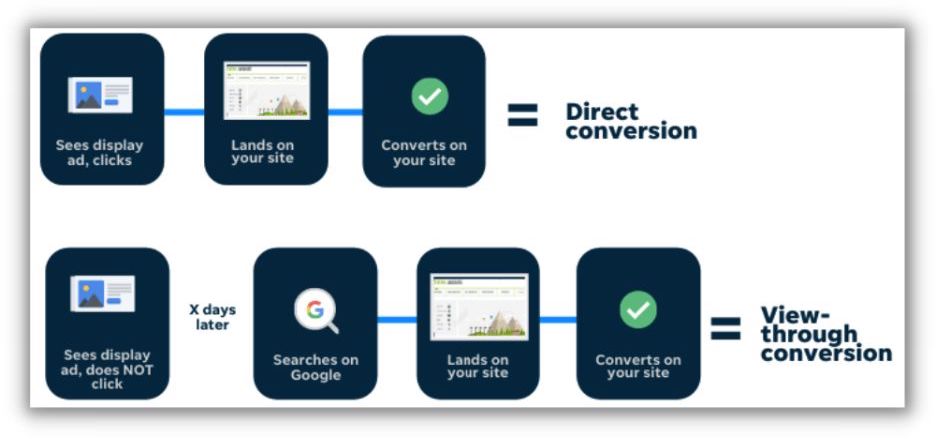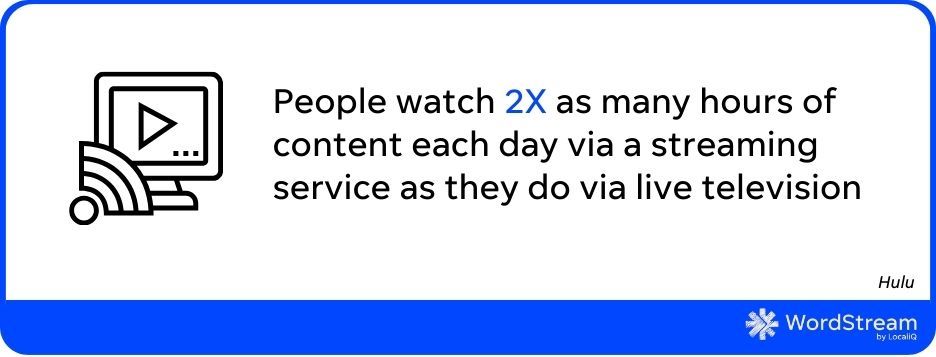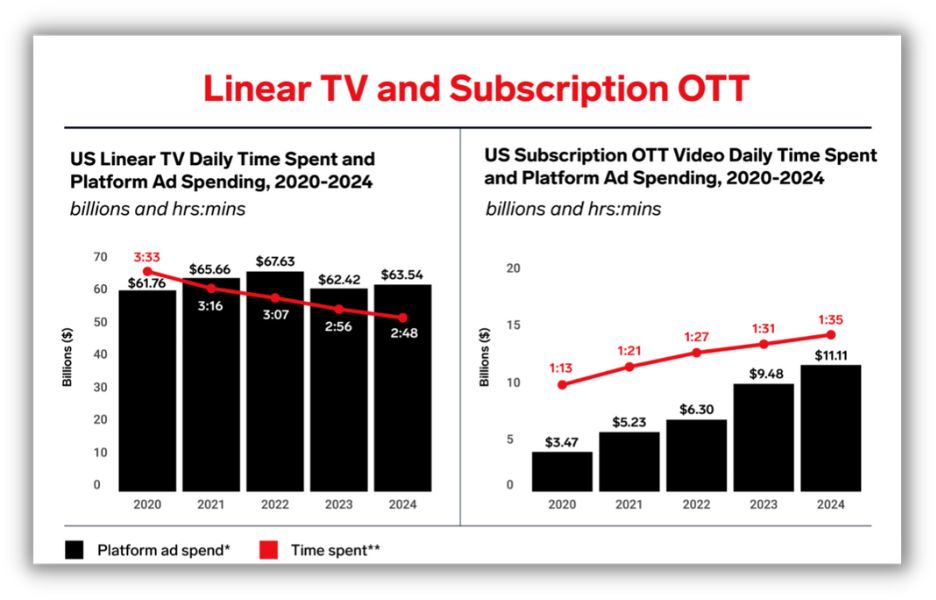Display advertising is one of those marketing tactics that you see everywhere (literally) but probably don’t think about how it works or the technology that powers it.
One second, you’re browsing a website, doing a little research for an upcoming vacation. And the next second, you’re seeing an ad pop up on the side for one of the resorts you were considering.
As a consumer, it can feel very magical. And as a business owner, it can be very effective at driving awareness, website clicks, and leads.
 We talked to Sr. Director of Product Management Mike Chais, one of the people behind the magic, about how display ads help businesses reach customers, what’s different about our approach, and what his team is working on to help our customers see continued success from display ads.
We talked to Sr. Director of Product Management Mike Chais, one of the people behind the magic, about how display ads help businesses reach customers, what’s different about our approach, and what his team is working on to help our customers see continued success from display ads.
Mike has almost two decades of experience in the digital marketing space. He joined LocaliQ in August 2008 to focus on business development, which led to years of gaining platform knowledge and facilitating many product initiatives outside of search ads. Given this knowledge and experience, Mike took over management of the Display Ads product in April 2015 and began managing LocaliQ’s Email Marketing solution in January 2022.
Your team develops and supports our display ads product. Can you tell us what that entails? How does this product help business owners and what goals does it help them achieve?
Display advertising is a type of advertising that enables businesses to get in front of people with targeted ads wherever they’re spending time online, in apps, or in streaming services. These ads come in many forms—the most popular is banner ads, which show on the tops, sides, and within content on websites.
But display ads also include in-app notifications, video ads, or other interactive formats.
They’re meant to build awareness and typically link to a landing page on a business’s site to drive engagement.
There are many potential engagement points between consumers and brands during their journey toward a buying decision. The more often a brand is able to engage with potential customers, the greater their chances of being chosen when the time comes.
When most people think of display advertising, they focus on the Google Display Network. What can you tell us about the other network options and placements available for businesses to run display ads?
Google Display Network is just one network of many that we have access to. By focusing ads solely on Google Display Network, you would be missing a lot of opportunities to reach consumers outside of those sites and placements.
LocaliQ’s Display Ads product is user-driven. We capture consumers based on interests, traits, and prerequisites they exhibit, then follow them with our clients’ messaging wherever possible. This gives us the ability to show ads on a wider range of inventory so businesses are truly reaching customers where they’re spending time online, in apps, or streaming TV.
Often, marketers can find brand awareness strategies like display difficult to measure. What are some of the key metrics you and your team pay attention to when measuring display advertising effectiveness?
We look past the click-through rate (CTR), which has historically been viewed as the holy grail for measuring display advertising.
However, the growing disparity in consumer inventory experiences has changed the game. An example would be a CTV (Large Screen) ad in your living room. 99% of the time, that cannot be clicked. Therefore, it will never win in a competition against an image ad on a smartphone or desktop.
Website metrics outside of clicks can be an excellent way to show overall attribution from a display campaign. Customers often don’t focus on users who don’t click but recall the brand and navigate to the website on their own. These are called view-through website visitors.

We can also track click or view-through behavior deeper in the form of priority pages or forms being viewed and/or completed on the website, or walk-ins to a customer location after being targeted based upon prior physical behavior.
In general, we look to focus more on overall engagements as we move forward. The more engagements we drive, the better chance our customers win new business.
Your team is always looking to build on our display ads product. Can you tell us about some of the new features you’re working on?
Presently we are focused on two areas:
1. Continued iteration on our proprietary engagement-based optimization to better handle disparities in inventory cost, attribution metrics by disparate creative/inventory type, and more.
This simply means optimizing our technology to drive the best results for our customers across all display ad formats and inventory. Our Display Ads campaigns are managed with a hybrid approach of AI and human oversight. In that spirit, we’re continually evolving our approach to drive the best results for our customers.
2. Making sure that we can offer every publisher opportunity available to our clients. A few new additions coming in Q4 include:
- Hulu only targeting. This will allow businesses to promote their marketing messages though Hulu advertising–one of the fastest-growing publishers out there.
- ZTV (Connected TV in Linear TV terms). This includes zip code-level residential targeting based on age, gender, and household income.
We’re excited to release these features so businesses can continue reaching a concisely targeted segment of their most likely customers wherever they’re spending time consuming content.

Video continues to grow in popularity. How do you believe video fits into the overall display strategy?
Sight, sound, and motion are, in general, more impactful than an image-based ad (even with animation). A video ad before a familiar show on a popular streaming network has more impact than an ad on the side of a desktop computer screen. Also, that video ad delivered on a TV in your living room has the potential for more impact than your phone (as one example).
Video is important because the audience is there and growing. This is best illustrated by looking at our own behavior. Most of us presently consume TV shows and other video content on a series of apps. We like to consume this content wherever we are, on any device we have at our disposal (or that we most prefer).
This is not to say that a large percentage of the population isn’t still watching network TV. We just know the trend is toward an on-demand experience. That’s why the networks, like ABC, NBC, and more, all have apps now.

This all relates to the message above. We need to be where the consumer is, not where we hope they’ll go. Users will continue to consume more video content overall as the trend continues to shift away from the “box.”
Build brand awareness with display advertising
Thanks to Mike for his insight on LocaliQ’s Display Ads product! Want to learn more about how display advertising can boost your business? Reach out to get a demo.
Related Articles
-

The 14 Absolute Best Brand Awareness Strategies & Examples
-

6 Google Ads Updates Small Businesses Need to Know Going Into 2023
-

What Is Geofencing Marketing & How Does It Work? (+5 Real Examples)
-

Remarketing Defined: How It Works to Recapture Customers (with Examples)
-

How Much Did Apple iOS 14 Really Affect Ad Costs? [Data]

